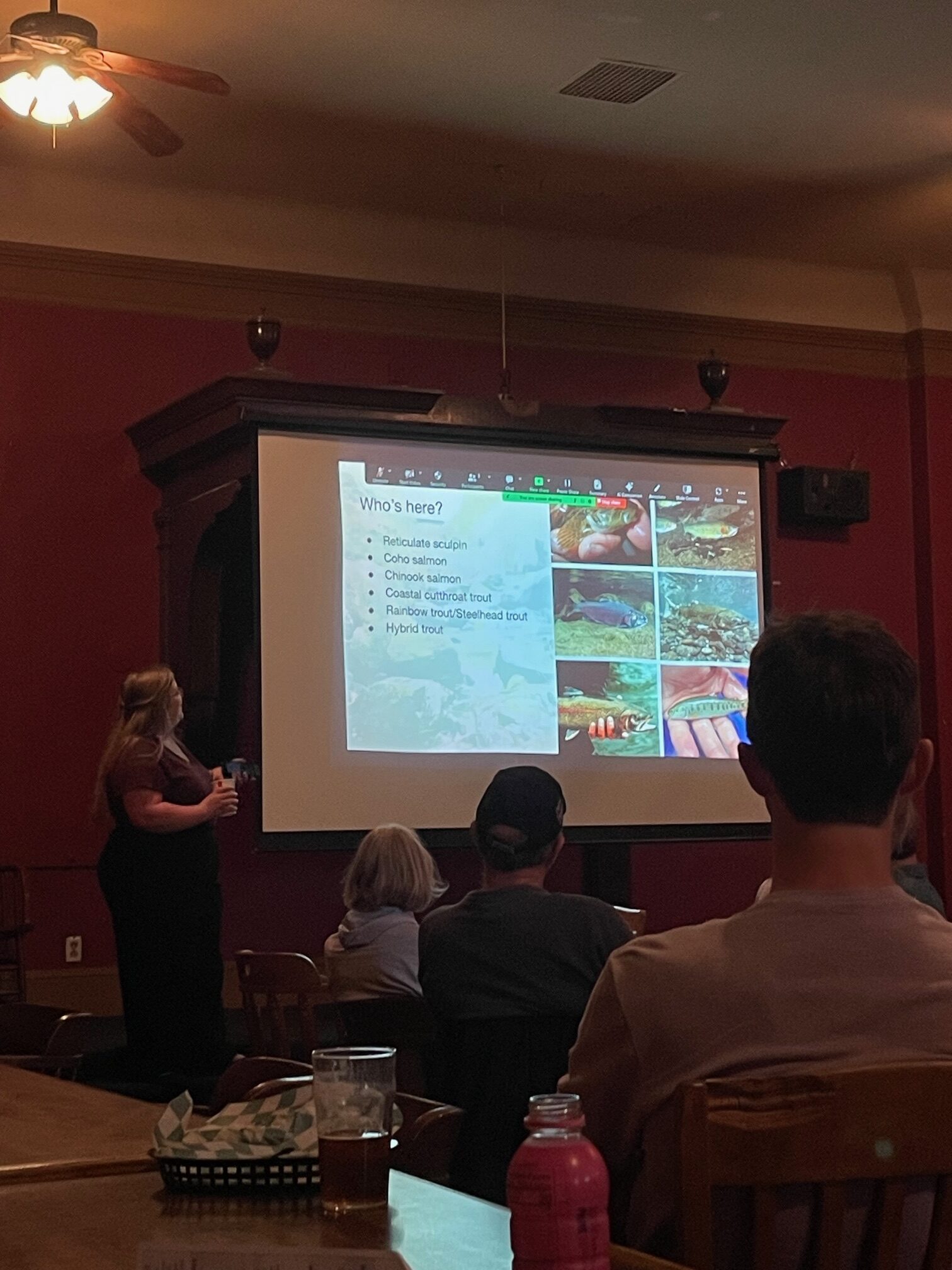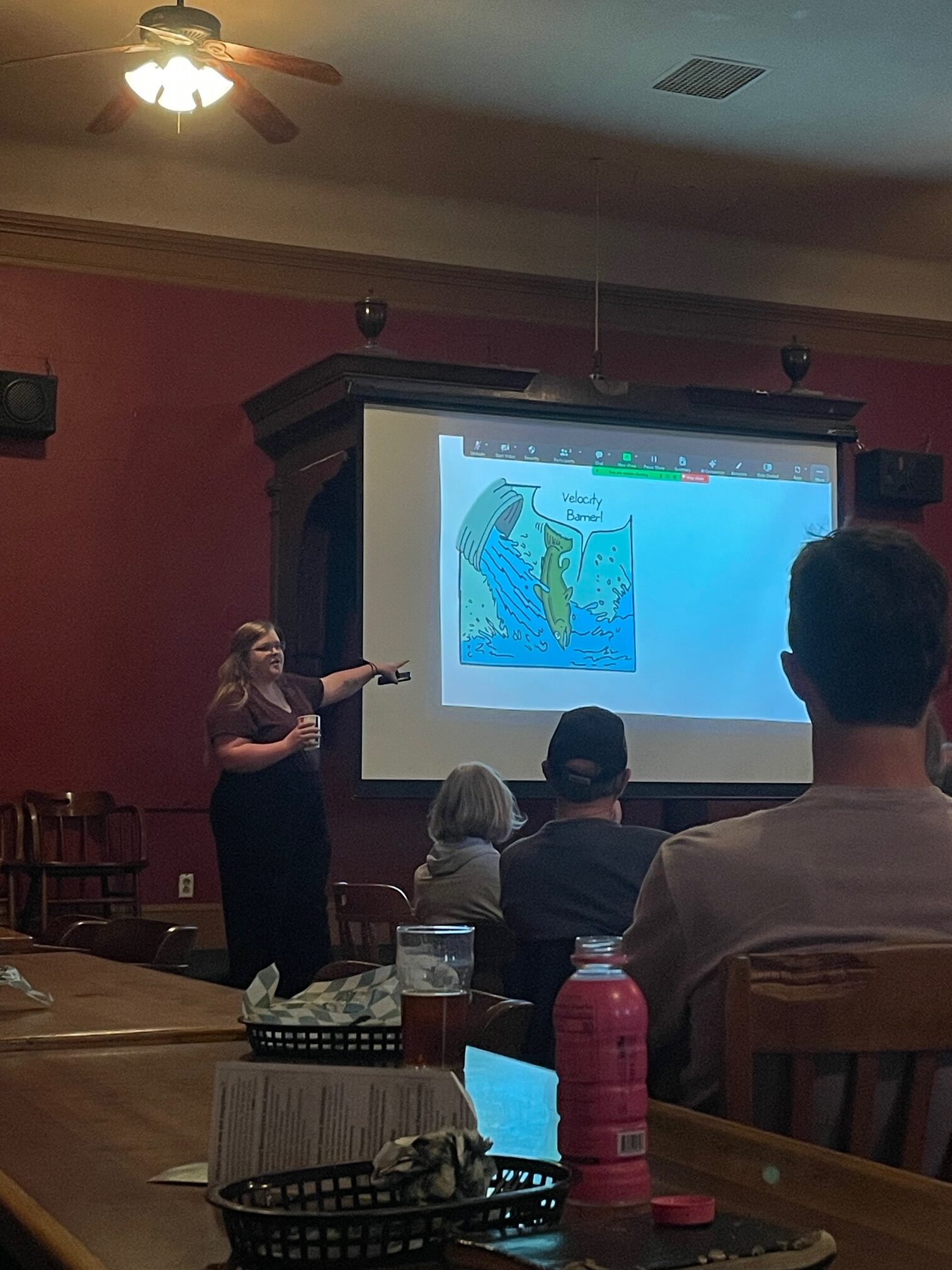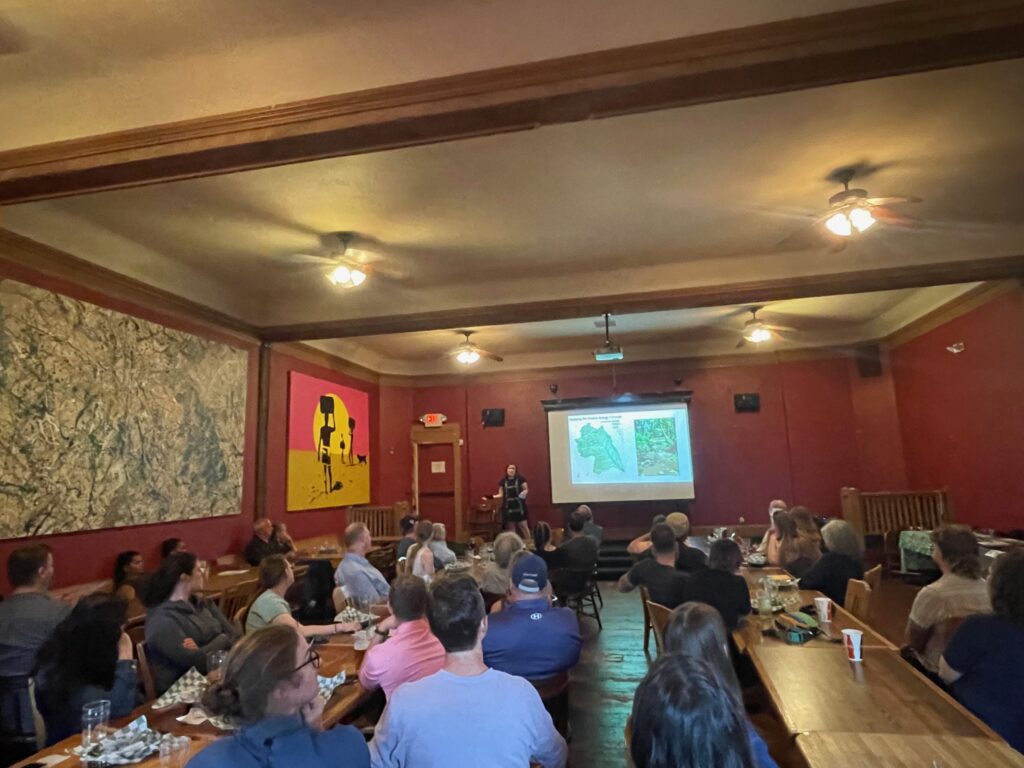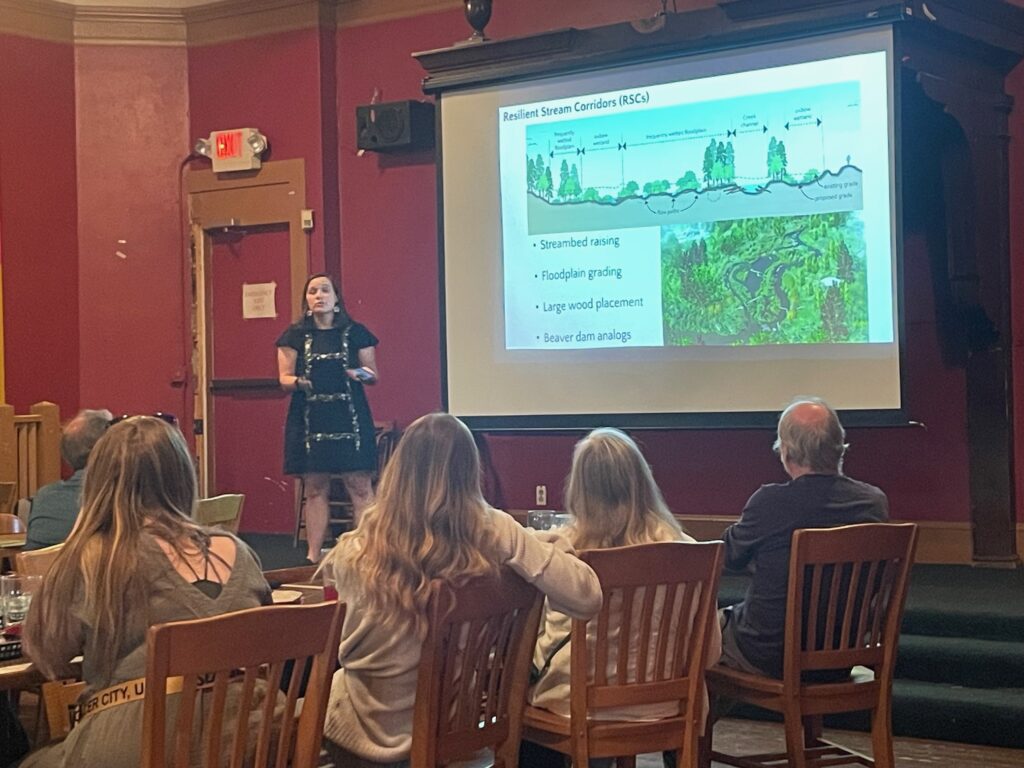The Multi-Benefits of Managing for Stream Power: June 2024 Science Talk
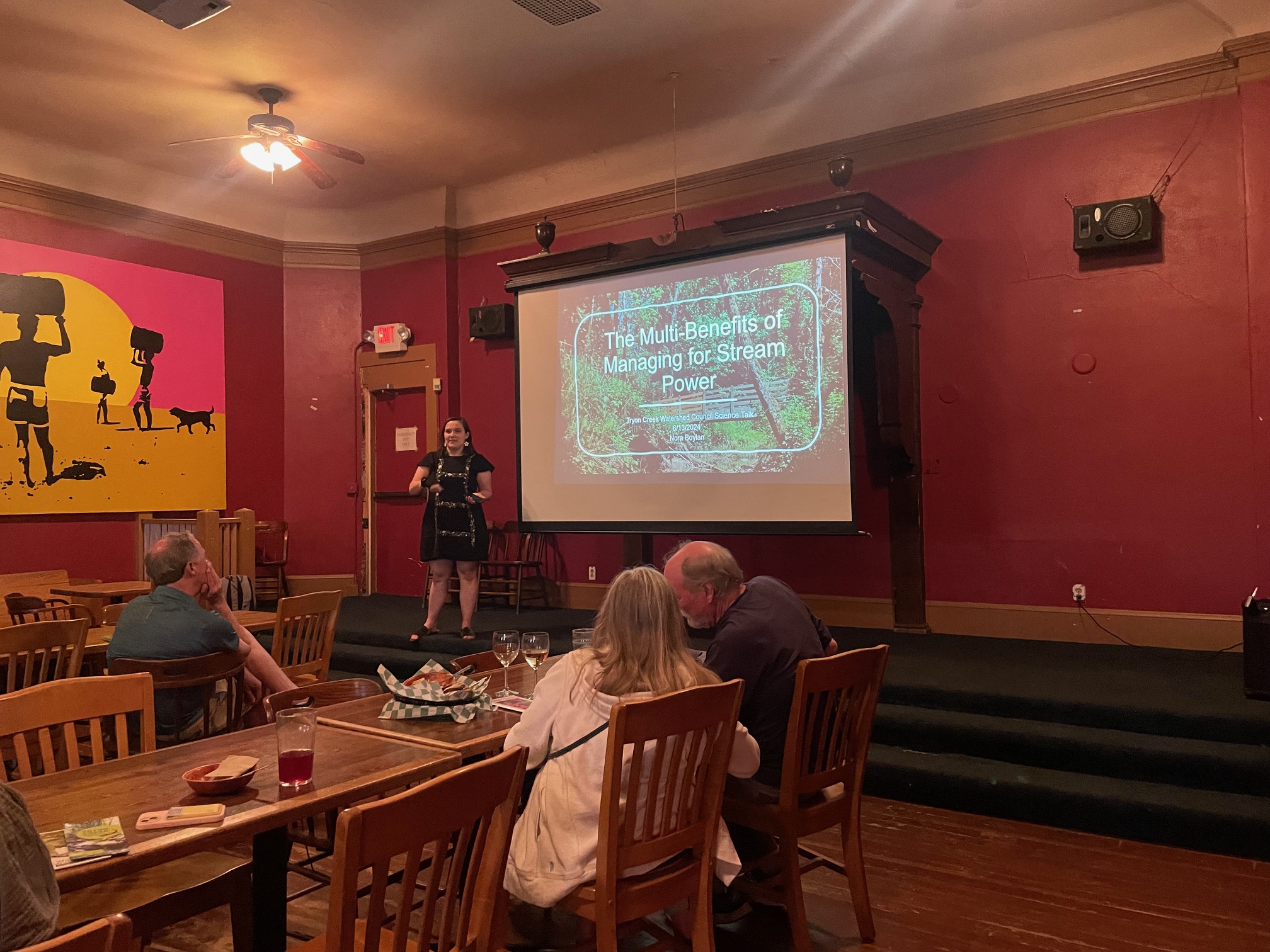
Thank you to everyone who joined us at the Lucky Lab and on Zoom last month for the June 2024 Science Talk, it was a blast! Here is the recording link (Alexis’s Fish & Fish Passage Updates presentation starts at 1:35, Nora Boylan’s Stream Power presentation starts at 34:28).
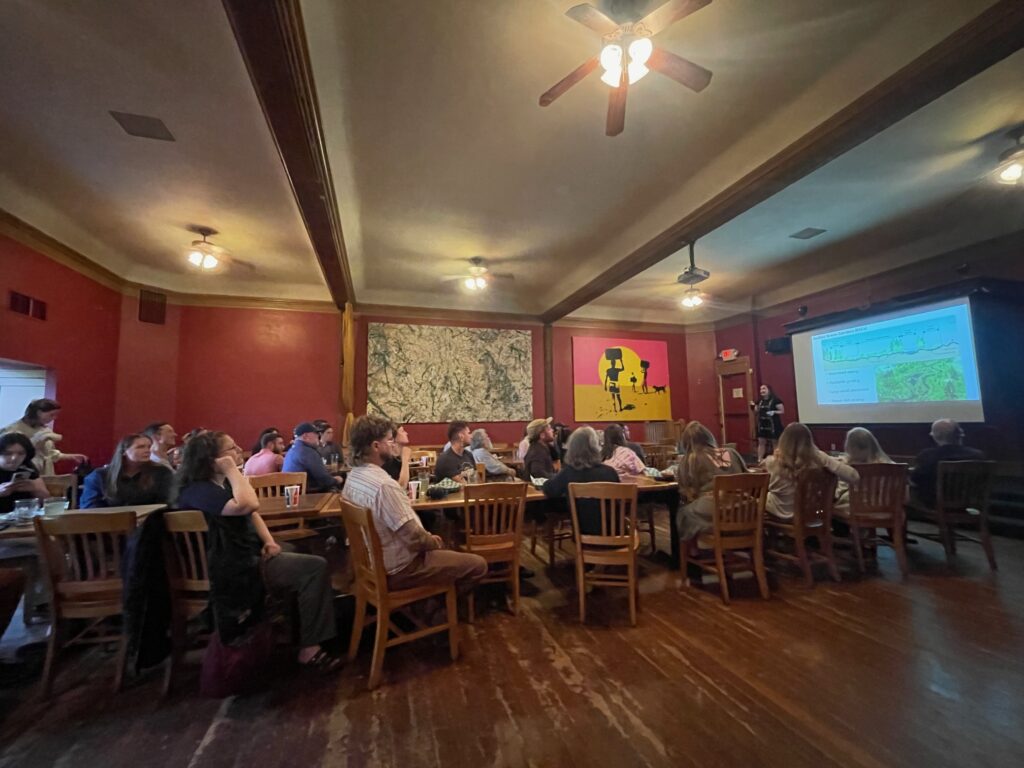
Photo credit: Tryon Creek Watershed Council & Friends of Tryon Creek
An important part of environmental stewardship and land restoration work is Indigenous stewardship. Indigenous tribes and nations in our local area include: Clackamas Chinook, the Willamette Tumwater, the Wasco-Wishram, the Watlata, the Multnomah, and other Chinookan peoples, as well as the Tualatin Kalapuya, the Cayuse, the Molalla, and other tribes and bands of the Columbia and Willamette Rivers. One thing you can do to support and uplift Indigenous communities is to sign this petition to support federal recognition of the Chinook Indian Nation: https://chinookjustice.org/petition/.
The evening kicked off with Tryon Creek Watershed Council Coordinator Alexis talking about fish and fish passage in the Tryon Creek watershed. She highlighted how Tryon Creek is an important stepping stone for anadromous species like salmon and steelhead to travel to and from fresh and saltwater. Culverts, structures that channel water into a subterranean waterway, can make fish passage tiring, dangerous, or altogether not possible for migrating fish. Alexis celebrated the replacing of the Boones Ferry Road culvert into a bridge which now allows fish to move underneath the road and travel up the creek, and shared updates on the Highway 43 Culvert, which, once made into an open-bottom arched culvert, will be a huge success for fish habitat connectivity. The US Fish & Wildlife Service supported Tryon Creek Watershed Council to collect data about fish abundance and habitat health in the creek for fish.
Photo credit: Tryon Creek Watershed Council & Friends of Tryon Creek
The main event for the Talk was Nora Boylan (MS, PG; Wolf Water Resources), a hydrologist presenting on the Multi-Benefits of Managing for Stream Power. She talked about the dangers of urbanization on the flow of water, like the alteration of the flow of water due to unmitigated expansion of impervious areas. Healthy biodiverse waterways are important to preventing erosion and reducing high amounts of energy that streams exert on their beds and banks: stream power. She and other researchers found that erosion has exponentially increased since development of impervious areas in Tryon Creek watershed. One innovative way to reduce erosion is creating what’s called Resilient Stream Corridors, like widening the stream corridor, which increase complexity of streambeds, floodplains, and the flow of water to distribute stream energy. Nora highlights how stream resiliency has broad impacts to the watershed, infrastructure, and humans. Restoration work like planting native species and removing invasive plants are some ways to enhance Resilient Stream Corridors.
After the talks concluded, Nora and Alexis took questions from the audience. Discussion included the implications of beavers in urban areas (beavers are ecosystem engineers, who we want to promote on the landscape. Natural resource professionals can work with property owners to redirect beaver’s efforts to reduce risks to infrastructure if necessary), fish population monitoring inquiries, and more. The Westside Watershed Resource Center and TCWC had tables set up with resources for attendees to take with them.
Look through the presentation slides to learn more!
Photo credit: Tryon Creek Watershed Council & Friends of Tryon Creek
Written by Jess Gustafson, Sustainability Intern (Lewis & Clark College)


